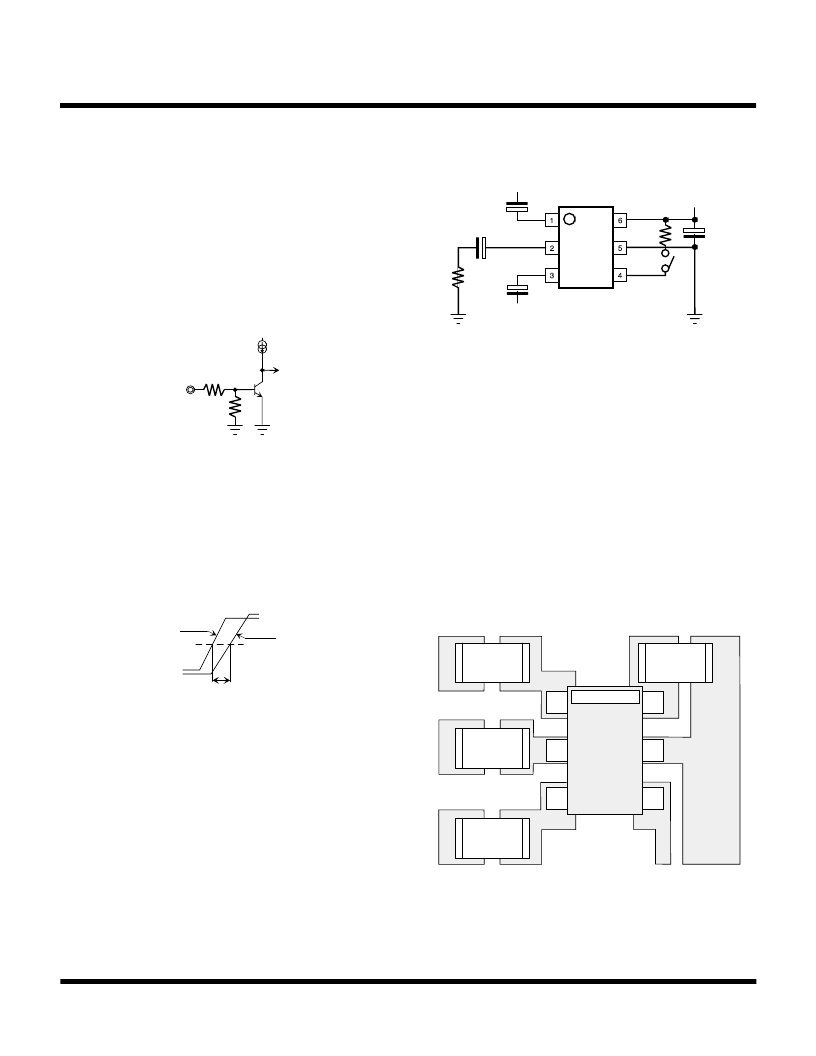- 您現(xiàn)在的位置:買賣IC網(wǎng) > PDF目錄361483 > TK15220M (TOKO Inc.) CAP .0033UF 100V PEN FILM 1206 5 PDF資料下載
參數(shù)資料
| 型號: | TK15220M |
| 廠商: | TOKO Inc. |
| 英文描述: | CAP .0033UF 100V PEN FILM 1206 5 |
| 中文描述: | 音頻模擬開關(guān) |
| 文件頁數(shù): | 9/12頁 |
| 文件大?。?/td> | 132K |
| 代理商: | TK15220M |

June 1999 TOKO, Inc.
Page 9
TK15220
APPLICATION INFORMATION
KEY INPUT CIRCUIT
Figure 10 illustates the KEY input equivalent circuit. When
the control pin is open, the input is pulled down to a low
level. This applies the channel A input signal to the output.
A high level changes the output to the channel B input
signal. The input impedance is approximately 40 k
. If it
is desired to raise the key threshold level, an external series
resistor can be connected. This resistance will elevate the
threshold level.
SWITCHING TIME
This time is the signal change response time compared to
the control key input signal. Figure 11 illustrates the timimg
chart. T = 2
μ
s typically.
APPLICATION
Figure 12 illustrates an example of a typical application.
The standard application is to use capacitor coupling at the
inputs and output of the TK15220M. For characteristics of
distortion and dynamic range versus R
, refer to the graphs
in the Typical Performance Characteristics. The TK15220M
can also be used with direct coupling, but the characteris-
tics will get worse (distortion, etc.). If direct coupling is
desired, then it is recommended to use external circuitry
that is biased compatible with the TK15220M. Use caution
that the external channel is of the low level type.
CROSS TALK
Figure 13 is an example of a layout pattern. In the
application of the TK15220, the following must be consid-
ered. Because of the high impedance at the inputs, the
capacitors can act as antennas to each other. If the parts
are bigger, and the space between the capacitors is too
narrow, then cross talk will increase. Therefore, when
designing the printed circuit pattern, separate the input
capacitors as far as possible and use as small a part as
possible (e.g., surface mount types, etc.).
Key in
to Logic
ZIN
Figure 10
Key in
Bch (Ach)
SW out
50%
Ach (Bch)
t
Figure 11
VCC
+
+
33 μF
Key
+
+
inA
10 μF
10 μF
out
RL
10 μF
inB
Figure 12
Figure 13
相關(guān)PDF資料 |
PDF描述 |
|---|---|
| TK15220MTL | CAP .033UF 100V PEN FILM 1913 5% |
| TK15321MTL | Audio Analog Switch |
| TK15321 | Audio Analog Switch |
| TK15321M | Audio Analog Switch |
| TK15322 | Audio Analog Switch |
相關(guān)代理商/技術(shù)參數(shù) |
參數(shù)描述 |
|---|---|
| TK15220MTL | 制造商:TOKO 制造商全稱:TOKO, Inc 功能描述:Audio Analog Switch |
| TK15220MTL/S2 | 制造商:TOKO 制造商全稱:TOKO, Inc 功能描述:Audio Analog Switch |
| TK15321 | 制造商:TOKO 制造商全稱:TOKO, Inc 功能描述:Audio Analog Switch |
| TK15321M | 制造商:TOKO 制造商全稱:TOKO, Inc 功能描述:Audio Analog Switch |
| TK15321MTL | 制造商:TOKO 制造商全稱:TOKO, Inc 功能描述:Audio Analog Switch |
發(fā)布緊急采購,3分鐘左右您將得到回復(fù)。